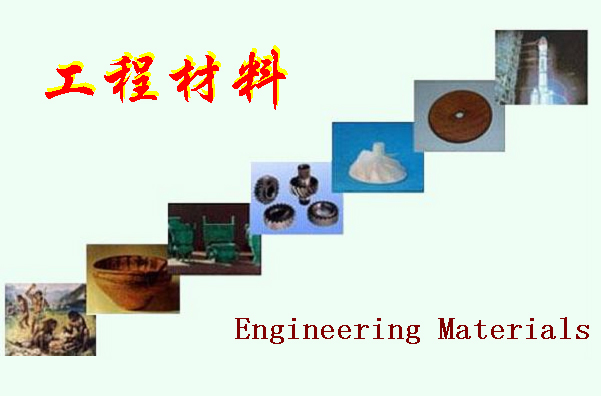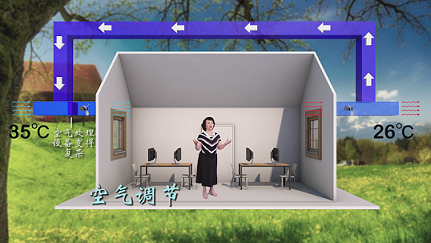
当前课程知识点:Finite Element Method (FEM) Analysis and Applications > 2、Finite element method of bar system based on direct stiffness method > 2.5 ANSYS case analysis of four-bar structure > Video 2.5
返回《Finite Element Method (FEM) Analysis and Applications》慕课在线视频课程列表
返回《Finite Element Method (FEM) Analysis and Applications》慕课在线视频列表
同学们好
现在我们开始演示四杆结构ANSYS的有限元分析
对一个有限元模型进行分析的话
它应该首先要包括四个步骤
首先我们要讨论这样的分析模型针对的是静力学分析
还是动力学分析,或者是传热分析
还是对应的是电磁场分析
那根据前面的四杆结构,我们会发现
它应该是属于静力学分析的内容
那接下来应该要选择单元
那所选择的单元的话,在这应该就是杆单元
我们确定了单元的类型之后
我们就可以进入相应的前处理阶段
那我们要输入相应的材料参数
也就是弹性模量、泊松比等相关的材料物理参数
然后可以建立对应的几何模型
在几何模型建立完成了之后,我们就可以进行划分网格
而对于这个四杆结构
由于它的形状比较简单
所以我们也可以直接不加网格,直接建立单元模型
然后我们就可以给定相应的边界条件进行处理
那后处理的话我们可以观测出它对应的后边的结果
我们可以看出总体的变形情况还有它总体的受力情况分析
那我们来判断出在哪一个位置是危险点等等
那我们在这里首先要启动ANSYS
我们可以发现有四个标签
其中比较重要的也就是File Management这个标签
在这里我们可以改变我们的工作路径还有对应的文件名
那我们就可以启动ANSYS在这里
对于ANSYS这个交互性平台
我们可以看出来上面这一行是我们所对应的公共菜单
那么比较重要的也就是主菜单
在这一部分
那图形显示也就是在相应的这一部分
那这一块是模型控制的工具条
那这一部分就是我们的用户提示信息
那相应的这几个部分就是对应的当前的设置状态
我们可以看出来在ANSYS的主菜单上
首先这就是我们所说的前处理
这是求解器
这是后处理
那我们前边已经确定了做好了相应的准备工作
已经确定了四杆结构它对应的模型
那我们可以进入对应的前处理阶段
首先的话我们要选定我们的单元类型
我们选定的单元类型就是LINK单元的2D的一号单元
我们可以OK
然后我们就选定了对应的杆单元
那杆单元它对应的实常数
那我们就可以输入它对应的实常数
所谓的实常数对应杆单元的话就是杆单元的面积
我们知道是100,OK
那接下来的话我们就可以输入我们的材料模型
也就是弹性模量和泊松比
在这里的话我们可以输入对应的材料模型
它是线性的Linear、弹性的、各向同性Isotropic
这个是295000,应该是兆帕
这个是0.3,OK
那接下来的话我们就可以直接建立我们对应的节点
那我们首先输入1号节点
1号节点它的坐标是0,0,0,Apply
那我们可以发现Apply的话
它直接可以完成对话框里面的动作
但是它不会关闭对话框
接下来我们可以输入2号节点
它的X坐标是400,Apply
然后输入3号节点
它X坐标也是400,Y坐标是300,Apply
最后我们输入4号节点
它的X坐标是0,Y坐标是300
我们可以关掉对话框,然后完成,OK
那接下来我们根据节点直接创建单元
那我们创建单元的话
1号单元是由1号节点和2号节点组成的
那我们就直接创建1号单元
那2号单元是由2号节点和3号节点组成的,Apply
然后3号单元是1号节点和3号节点,Apply
最后4号单元是3号节点和4号节点组成的,OK
那我们有限元的模型初步就可以建立好了
那接下来的话我们就可以进入求解
首先的话我们要定义边界条件
所对应的边界条件我们可以发现
1号和4号节点,是在X和Y方向上固定的
也就是所有的自由度都固定,Apply
2号节点是Y方向上固定,OK
前面我们定义的是位移边界条件
接下来我们要施加对应的力(边界)
那在3号节点上,它应该是Y方向上
应该是与Y相反的
Y方向上施加负的25000N的压力
那在2号节点上
我们施加的是X方向上的正的20000N拉力
现在我们完成了边界条件的输入
接下来我们就可以直接求解
求解完毕
我们就可以进入后处理模块
那在后处理模块我们就可以直接地把对应的变形的云图给确定出来
在这里我们就直接看它总的变形情况
因为对于线型单元的话,它只是一条线,而没有实体的效果
所以的话,如果想看出实体的效果
我们可以通过在公共菜单上
PlotControl的公共菜单上
我们可以直接地来进行变化
在这Style
公共菜单的PlotControl的Style
进入Size and Shape
在这
我们就可以弄出实体的效果
那我们也可以通过用List的方法
来把最后节点对应的变形情况可以看出
那我们可以看出得到对应的节点2
它在X方向上的位移是0.27119
与我们前面所用直接法来构建的计算结果是吻合的
那第3个节点的它的X方向和Y方向上的变形结果
也跟前面的计算结果是一致的
另外我们也可以通过List它的支反力的结果
它的结果我们可以看出来
它的支反力就是节点1和节点4
在X和Y方向上的支反力
还有节点2在Y方向上的支反力
结果跟前面的计算是相一致的
好的,四杆结构在ANSYS上的操作演示在此结束
谢谢大家
同学们
这一讲的内容就是这些
我们下一讲再见
-Finite element, infinite capabilities
--Video
-1.1 Classification of mechanics:particle、rigid body、deformed body mechanics
--1.1 Test
-1.2 Main points for deformed body mechanics
--1.2 Test
-1.3 Methods to solve differential equation solving method
--1.3 Test
-1.4 Function approximation
--1.4 Test
-1.5 Function approximation defined on complex domains
--1.5 Test
-1.6 The core of finite element: subdomain function approximation for complex domains
--1.6 Test
-1.7 History and software of FEM development
--1.7 Test
-Discussion
-Homework
-2.1 Principles of mechanic analysis of springs
--2.1 Test
-2.2 Comparison between spring element and bar element
--2.2 Test
-2.3 Coordinate transformation of bar element
--2.3 Test
-2.4 An example of a four-bar structure
--2.4 Test
-2.5 ANSYS case analysis of four-bar structure
--ANSYS
-Discussion
-3.1 Mechanical description and basic assumptions for deformed body
--3.1 Test
-3.2 Index notation
--3.2 Test
-3.3 Thoughts on three major variables and three major equations
--3.3 Test
-3.4 Test
-3.4 Construction of equilibrium Equation of Plane Problem
-3.5 Test
-3.5 Construction of strain-displacement relations for plane problems
-3.6 Test
-3.6 Construction of constitutive relations for plane problems
-3.7 Test
-3.7 Two kinds of boundary conditions
- Discussion
-- Discussion
-4.1 Test
-4.1 Discussion of several special cases
-4.2 Test
-4.2 A complete solution of a simple bar under uniaxial tension based on elastic mechanics
-4.3 Test
-4.3 The description and solution of plane beam under pure bending
-4.4 Test
-4.4 Complete description of 3D elastic problem
-4.5 Test
-4.5 Description and understanding of tensor
-Discussion
-5.1 Test
-5.1Main method classification and trial function method for solving deformed body mechanics equation
-5.2 Test
-5.2 Trial function method for solving pure bending beam: residual value method
-5.3 Test
-5.3How to reduce the order of the derivative of trial function
-5.4 Test
-5.4 The principle of virtual work for solving plane bending beam
-5.5 Test
-5.5 The variational basis of the principle of minimum potential energy for solving the plane bending
-5.6 Test
-5.6 The general energy principle of elastic problem
-Discussion
-6.1Test
-6.1 Classic method and finite element method based on trial function
-6.2 Test
-6.2 Natural discretization and approximated discretization in finite element method
-6.3 Test
-6.3 Basic steps in the finite element method
-6.4 Test
-6.4 Comparison of classic method and finite element method
-Discussion
-7.1 Test
-7.1 Construction and MATLAB programming of bar element in local coordinate system
-7.2 Test
-7.2 Construction and MATLAB programming of plane pure bending beam element in local coordinate syste
-7.3 Construction of three-dimensional beam element in local coordinate system
-7.4 Test
-7.4 Beam element coordinate transformation
-7.5 Test
-7.5 Treatment of distributed force
-7.6 Case Analysis and MATLAB programming of portal frame structure
-7.7 ANSYS case analysis of portal frame structure
-8.1 Test
-8.1 Two-dimensional 3-node triangular element and MATLAB programming
-8.2 Test
-8.2 Two-dimensional 4-node rectangular element and MATLAB programming
-8.3 Test
-8.3 Axisymmetric element
-8.4 Test
-8.4 Treatment of distributed force
-8.5 MATLAB programming of 2D plane rectangular thin plate
-8.6 Finite element GUI operation and command flow of a plane rectangular thin plate on ANSYS softwar
-Discussion
-9.1 Three-dimensional 4-node tetrahedral element and MATLAB programming
-9.2 Three-dimensional 8-node hexahedral element and MATLAB programming
-9.3 Principle of the isoparametric element
-9.4Test
-9.4Numerical integration
-9.5 MATLAB programming for typical 2D problems
-9.6 ANSYS analysis case of typical 3Dl problem
-Discussion
-10.1Test
-10.1Node number and storage bandwidth
-10.2Test
-10.2 Properties of shape function matrix and stiffness matrix
-10.3Test
-10.3 Treatment of boundary conditions and calculation of reaction forces
-10.4Test
-10.4 Requirements for construction and convergence of displacement function
-10.5Test
-10.5C0 element and C1 element
-10.6 Test
-10.6 Patch test of element
-10.7 Test
-10.7 Accuracy and property of numerical solutions of finite element analysis
-10.8Test
-10.8 Error and average processing of element stress calculation result
-10.9 Test
-10.9 Error control and the accuracy improving method of h method and p method
-Discussion
-11.1 Test
-11.1 1D high-order element
-11.2 Test
-11.2 2D high-order element
-11.3 Test
-11.3 3D high-order element
-11.4 Test
-11.4 Bending plate element based on thin plate theory
-11.5 Test
-11.5 Sub-structure and super-element
-12.1Test
-12.1 Finite element analysis for structural vibration: basic principle
-12.2 Test
-12.2 Case of finite element analysis for structural vibration
-12.3 Test
-12.3 Finite element analysis for elastic-plastic problems: basic principle
-12.4 Test
-12.4 Finite element analysis for elastic-plastic problems: solving non-linear equations
-Discussion
-13.1 Test
-13.1 Finite element analysis for heat transfer: basic principle
-13.2 Test
-13.2 Case of finite element analysis for heat transfer
-13.3 Test
-13.3 Finite element analysis for thermal stress problems: basic principle
-13.4 Test
-13.4 Finite element analysis for thermal stress problems: solving non-linear equation
-Discussion
-2D problem: finite element analysis of a 2D perforated plate
-3D problem: meshing control of a flower-shaped chuck
-Modal analysis of vibration: Modal analysis of a cable-stayed bridge
-Elastic-plastic analysis: elastic-plastic analysis of a thick-walled cylinder under internal pressur
-Heat transfer analysis: transient problem of temperature field during steel cylinder cooling process
-Thermal stress analysis: temperature and assembly stress analysis of truss structure
-Probability of structure: Probabilistic design analysis of large hydraulic press frame
-Modeling and application of methods: Modeling and analysis of p-type elements for plane problem





